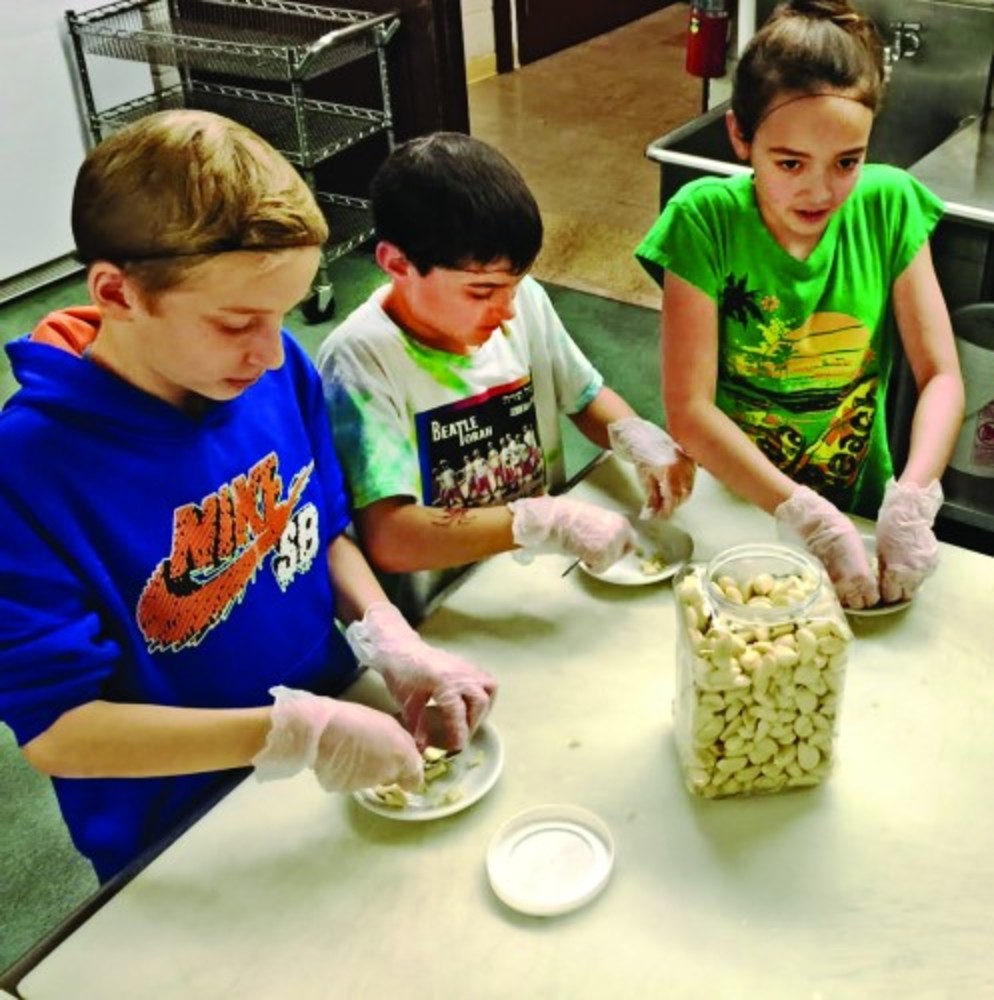A pickle of an education
 JCDS fifth graders prepare the garlic for their pickles. /JCDSRI
JCDS fifth graders prepare the garlic for their pickles. /JCDSRI
Ken Wagner, Rhode Island’s superintendent of education, recently called for a revolution in schooling. Instead of the 19th- century industrial approach of a teacher instructing students in a set curriculum, he called for “reimagining schooling through hands-on, integrated and problem-based approaches” in a Providence Journal Op-Ed.
That sounds good, but what does it mean in practice? The Jewish Community Day School of Rhode Island has been in the process of finding out. And it just took a big leap forward, thanks to the lowly pickle.
Last fall, the fifth-grade class was finishing up a fairly traditional science project on ecosystems. It involved goldfish, and when all the fish died in their shallow 2-liter-bottle habitats, the students were upset. They clamored for a class aquarium. Rather than put them off, Kayla Magee, their general studies teacher, told them they could have one if they raised the money for it.
After some brainstorming, these 10- to 11-year-olds decided to make and sell a favorite lunchtime snack: pickles. With encouragement from Head of School Adam Tilove, Magee turned that goal into the curriculum for the next month. She put aside most of her planned instruction and supported the students’ efforts.
Fortunately, the pickle challenge involved nearly every subject in the curriculum. The initial research involved extensive reading. On a field trip to Whole Foods Market, students learned the science of pickling that could turn a fresh cucumber into something that would last for months in a jar. To find the best size and price for the pickle jar, they had to resort to math. Decisions – from which kind of pickle to make (half-sour garlic) to the name on the jar (EastSide Pickles) – were by majority vote, preceded by extensive writing and speaking. And to ensure that the pickles were kosher, the kids had to learn some of the intricacies of kashrut from Judaic Studies teacher Rabbi Andrea Gouze.
Along the way, they picked up some entrepreneurial skills, from calling produce suppliers for a good deal on cucumbers and garlic, to designing the logo and information area on the jar. They even got a crash course on spreadsheets to record their sales against expenses.
Magee had all the students keep track of progress in notebooks, complete with comments and questions. She assessed each student on the notebooks and participation in class deliberations. And because of the collaborative structure and diverse tasks, the quieter or less engaged kids were able to become more involved and find an area to shine.
The students were caught up in the process, which felt very different from school. Toward the end of the project, she gave them a math quiz, to check on their skills during the experiment. They first objected, “We haven’t done math in a long time,” yet they did well on the test.
Finally, the pickles were ready for sale. Within a few days, the entire batch of 100 jars sold out to classmates, family members and neighbors. The $300 earned after expenses was more than enough to outfit an aquarium. Far more valuable was the engaged learning, both for the students and the school.
Magee hopes to do a similar challenge every year, but she’s convinced it has to come from the students and be driven by them. What if nothing captures their imagination? She says she’s not worried at all about that – kids will always find something to reach for if they know their school will support them.
JOHN LANDRY is a business writer in Providence and the father of two graduates of JCDS.







